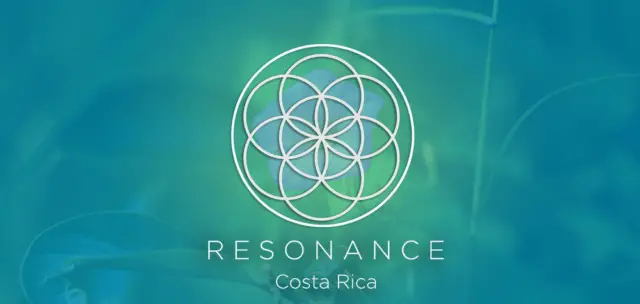Costa Rica is celebrated for its lush rainforests, breathtaking beaches, and rich biodiversity. But beyond its natural beauty lies an often-overlooked treasure: its indigenous communities. These groups, deeply rooted in history and tradition, offer visitors a unique and meaningful opportunity to explore a different side of Costa Rica—one enriched by ancestral knowledge, cultural resilience, and sustainable ways of living.
Visiting indigenous communities in Costa Rica is not just a travel experience; it is an opportunity to learn, connect, and appreciate the wisdom and customs of people who have safeguarded their heritage for centuries. Whether you are looking for an educational journey or a deep cultural immersion, here’s how to make the most of your visit.
Learn About the Indigenous Groups Before You Go
Costa Rica is home to eight officially recognized indigenous groups: the Bribri, Cabécar, Boruca, Ngäbe, Maleku, Térraba, Huetar, and Chorotega. Each has distinct customs, languages, and traditions.
Before visiting, take time to research the community you plan to engage with. Understanding their history and way of life will enrich your experience and show respect for their culture. Many communities have strong beliefs rooted in harmony with nature, spirituality, and communal living—concepts that can offer a fresh perspective to travelers.
Choose a Responsible Tour or Guide
One of the most important aspects of visiting indigenous communities is ensuring your presence supports, rather than exploits, the people you are visiting. Many indigenous groups have developed their own tourism initiatives, providing authentic experiences while ensuring that visitors contribute to the local economy in meaningful ways.
Look for locally operated tours or guides who work directly with indigenous communities. Responsible tourism ensures that your visit is ethical, sustainable, and beneficial to the people you interact with.
Embrace Cultural Immersion Activities
Rather than observing passively, participate in experiences that deepen your connection to the indigenous way of life. Some activities you might engage in include:
– **Learning Traditional Crafts** – Many indigenous groups create handmade crafts using natural materials. The Boruca, for example, are known for their intricate, hand-carved and painted wooden masks, which play a role in their annual celebrations.
– **Joining a Traditional Ceremony** – Some communities offer visitors the chance to take part in spiritual rituals, such as ancestral fire ceremonies or medicinal plant blessings, which offer insight into their beliefs and healing practices.
– **Tasting Local Foods** – Indigenous cuisine often features organic and locally sourced ingredients. Try dishes made from tropical fruits, roots, and wild-harvested plants, as well as cacao-based beverages used in spiritual practices.
– **Exploring Nature with Indigenous Guides** – Many indigenous groups have an incredible wealth of knowledge about the local flora, fauna, and ecosystem. Walking through the jungle with a Cabécar or Bribri guide is an unforgettable experience that reveals the hidden secrets of Costa Rica’s biodiversity.
Support Local Artisans and Businesses
Buying handmade goods from indigenous artisans is a great way to support their craftsmanship and economy. Traditional textiles, wood carvings, woven baskets, and jewelry are not only beautiful souvenirs but also carry cultural significance. When purchasing crafts, ensure that they are authentically made within the community rather than mass-produced imitations sold in tourist markets.
Respect Local Customs and Traditions
Indigenous cultures often have customs that may be different from those of the outside world. It is important to approach each experience with respect and an open mind. Some key etiquette guidelines include:
– **Dress Modestly** – Many communities value traditional clothing and modest attire. Wearing respectful clothing shows that you honor their customs.
– **Ask Before Taking Photos** – Not all indigenous people are comfortable being photographed. Always ask for permission before taking pictures, especially during sacred ceremonies.
– **Be Mindful of Language** – Some indigenous groups do not speak Spanish fluently or use their native language primarily. Learning a few basic phrases in their language can be a sign of respect.
– **Follow Their Environmental Practices** – Indigenous communities often have strict sustainability principles. Do not litter, avoid disrupting wildlife, and be conscious of water and resource use.
Stay Overnight for a Deeper Experience
Some indigenous communities in Costa Rica welcome visitors to stay overnight, offering homestay experiences or eco-lodges that allow deeper cultural interaction. Spending a night in an indigenous settlement is vastly different from staying in a traditional hotel—it provides a chance to live like the locals, hear their stories, and wake up surrounded by the natural world they cherish.
Homestays often include meals with families, storytelling around a fire, or early morning hikes led by community elders. This immersion offers a deeper understanding of the values that shape indigenous life.
Reflect on What You Have Learned
The experience of visiting an indigenous community extends beyond the time spent there. After leaving, take the time to reflect on what you learned and how these insights might shape your perspective on life, sustainability, and cultural diversity.
Many travelers find that their visit to an indigenous community shifts their outlook on consumerism, environmental responsibility, and human connection. Consider ways to support indigenous initiatives even after you return home, such as purchasing fair-trade goods or advocating for indigenous rights.
A Journey of Connection and Respect
Visiting the indigenous communities of Costa Rica is more than just a cultural experience—it is a journey into the heart of traditions that have thrived for generations. Through learning, participation, and ethical tourism, travelers can gain insights that reshape their worldview.
By choosing responsible travel practices, respecting customs, and embracing opportunities for meaningful exchanges, visitors leave with more than just memories—they gain wisdom, perspective, and an appreciation for the profound knowledge that indigenous communities hold.
So, if you’re planning a visit, go with an open heart, an eager mind, and a deep respect for the people who have called Costa Rica home for thousands of years.

